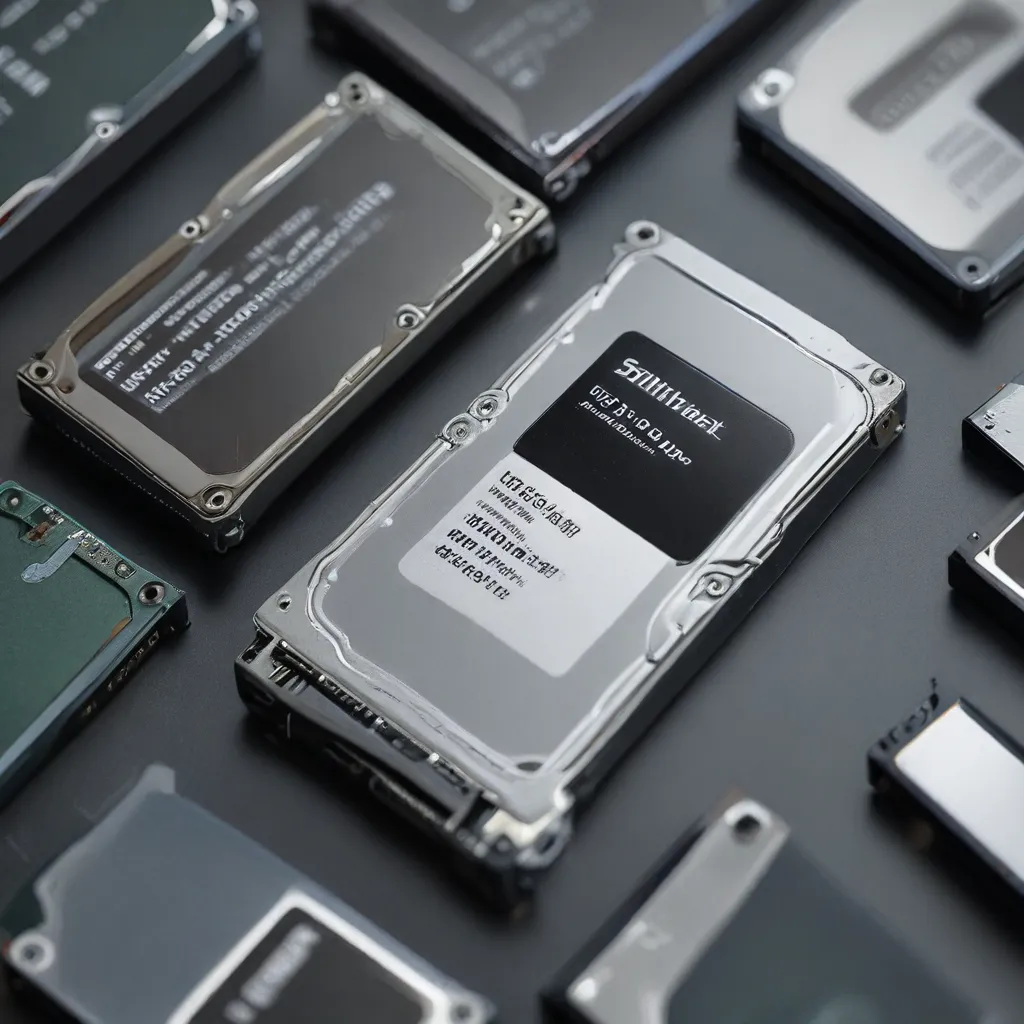
The Need for Speed: Why Your Computer Deserves an SSD Upgrade
As a self-proclaimed tech enthusiast and computer repair specialist, I’ve seen it all. From ancient desktops running Windows 98 to sleek, modern laptops that could put the Batmobile to shame. But you know what’s always caught my attention? The humble solid-state drive (SSD).
Now, I get it – when most people think of upgrading their computer, the first thing that comes to mind is probably a shiny new graphics card or the latest processor. But let me tell you, friends, the real game-changer is swapping out that old, clunky hard disk drive (HDD) for the lightning-fast performance of an SSD. It’s like upgrading from a horse-drawn carriage to a Formula 1 race car.
I still remember the day I convinced my buddy Steve to make the switch. He was convinced that his computer was on its last legs, until I showed him how a simple SSD installation could breathe new life into his machine. The difference was night and day – his boot times went from a painful eternity to mere seconds, and programs that used to take an age to load were now opening in the blink of an eye.
It was like watching a computer version of “The Incredible Hulk” – suddenly, Steve’s aging laptop was transformed into a lean, mean, productivity machine. And let me tell you, the look on his face when he realized what he’d been missing out on all this time? Priceless.
The SSD Advantage: Faster, Smoother, and More Reliable
So, what is it about SSDs that makes them such a game-changer? Well, my friends, let me break it down for you. Unlike traditional HDDs, which rely on spinning platters and mechanical arms to access data, SSDs use flash memory chips to store and retrieve information. This means that they can access data much, much faster, with access times in the range of microseconds, compared to the milliseconds of a typical HDD.
According to Verbatim, SSDs also have significantly lower access times and higher data transfer rates than HDDs. This translates to near-instant boot times, lightning-fast program launches, and silky-smooth multitasking. It’s no wonder that SSDs have become the go-to choice for anyone looking to breathe new life into their aging computer.
But the benefits of SSDs don’t stop there. As the Intel community points out, SSDs are also much more durable and reliable than their HDD counterparts. Since there are no moving parts, SSDs are less susceptible to the kind of physical damage that can bring an HDD to its knees. And with their advanced error-correction and wear-leveling algorithms, SSDs can maintain their performance even after years of heavy use.
Supercharging Your Workflow: How SSDs Can Boost Productivity
Now, I know what you’re thinking – “Sure, SSDs are faster and more reliable, but is it really worth the investment?” Well, my friends, let me tell you, the answer is a resounding “yes!”
According to Kingston, SSDs can significantly improve productivity by reducing system boot times, program launch times, and file transfer speeds. And when you’re working against the clock, every second counts. Imagine being able to launch your favorite productivity suite in the blink of an eye, or seamlessly switch between multiple applications without any lag or slowdown.
But it’s not just about speed – SSDs can also help to reduce frustration and boost your overall workflow. No more waiting for your computer to catch up with your thoughts, or watching helplessly as your system grinds to a halt while you’re trying to meet a crucial deadline. With an SSD-powered machine, you can forget about those productivity-sapping delays and focus on getting the job done.
And let’s not forget about the impact on your mental well-being. When your computer is running like a dream, it’s easier to stay focused and motivated. No more pulling your hair out in frustration, or daydreaming about hurling your laptop out the window (not that I’ve ever been there, of course).
Upgrading Made Easy: Swapping Out That Old HDD
So, you’re convinced that an SSD upgrade is the way to go, but you’re not sure where to start? Fear not, my friends – the process is actually a lot simpler than you might think.
First things first, you’ll need to determine the type of SSD that’s compatible with your computer. Verbatim offers a range of SATA III 2.5-inch internal SSDs that are perfect for most desktop and laptop computers. Once you’ve got the right drive, it’s simply a matter of physically swapping it out and cloning your old HDD data onto the new SSD.
Now, I know what you’re thinking – “Cloning data? That sounds complicated!” But trust me, it’s a lot easier than it sounds. There are plenty of user-friendly data migration tools out there that can handle the process for you, with minimal fuss and hassle. And if you’re ever feeling a bit overwhelmed, you can always count on the team at IT Fix to lend a helping hand.
Before you know it, you’ll be up and running with a lightning-fast, super-reliable SSD that’s guaranteed to breathe new life into your trusty old computer. And let me tell you, the look on your face when you see just how much of a difference it makes? Priceless.
So, what are you waiting for? Ditch that old HDD and say hello to the future of computing with a blazing-fast SSD upgrade. Your productivity, and your sanity, will thank you for it.












